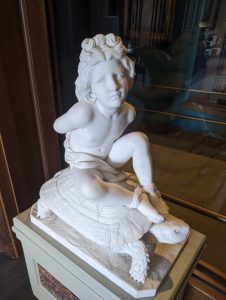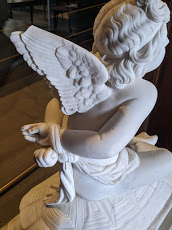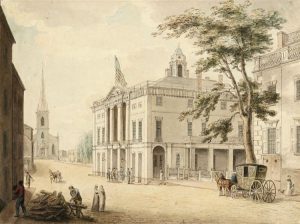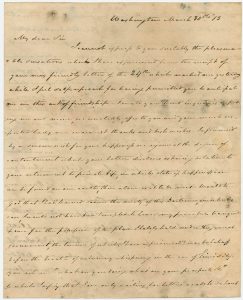By Laura Williams, Visitor Services Coordinator
As America’s first historical society, our institution has had the honor, privilege, and responsibility to build and care for a vast collection of letters and various other correspondences. Through gathering these items over the years, the role of the postal service in keeping citizens connected throughout history is apparent. Though it may be easier to maintain relationships in the digital age, the mail delivery service is still a vital part of society from rural communities to those without reliable access to e-mail or social media. It could also be said that a hand-written note carries a much more lasting impression and warm sentiment! The roots of the U.S. Postal Service as an American institution have played an instrumental part in our nation’s history, growth, and success.
Prior to the establishment of post offices in the colonies, “correspondents depended on friends, merchants, and Native Americans to carry messages.” [1] Mail could typically be left at inns and taverns for pick up and delivery, and eventually the Crown did institute a postal service for the colonies with Benjamin Franklin serving as joint Postmaster General. Franklin was born in Boston and had a knack for gathering and circulating news and ideas through journalism and publishing at an early age. Working under his brother James at The New-England Courant, and writing satirical pieces under the pseudonym “Silence Dogood,” he always pushed the limits on political correctness. Though he had been appointed joint Postmaster by the Crown in 1753, he was ultimately “dismissed in 1774 for actions sympathetic to the cause of the colonies.” [1]
Of course, following the American Revolution the U.S. established its own system as a new country. This establishment of the U.S. Postal Service by the Second Continental Congress took place on 26 July 1775. Franklin revised the new organization and created an operational system from which our current postal service still functions today. [1]
Following Franklin’s term as Postmaster General was that of Ebenezer Hazard, this time under the U.S. Constitution. Before his appointment, Ebenezer Hazard was a Princeton-educated New York City printer and post office surveyor. In fact, he was a good acquaintance of MHS founder Jeremy Belknap, who described him as his “guide, philosopher, and friend.” In another interesting turn of events, Hazard was the first person elected a corresponding (non-resident) member of the MHS in 1792. Check out a letter between the two of them here. Next, Samuel Osgood, a 1770 Harvard graduate, was President Washington’s Postmaster General from 1789 to 1791. Samuel Osgood also appears in correspondences in both the MHS Adams and Paine Papers collections.

[1] “Colonial Times; The Postal Service Begins.” The United States Postal Service: an American History, Government Relations, U.S. Postal Service, 2020, pp. 2–4.










